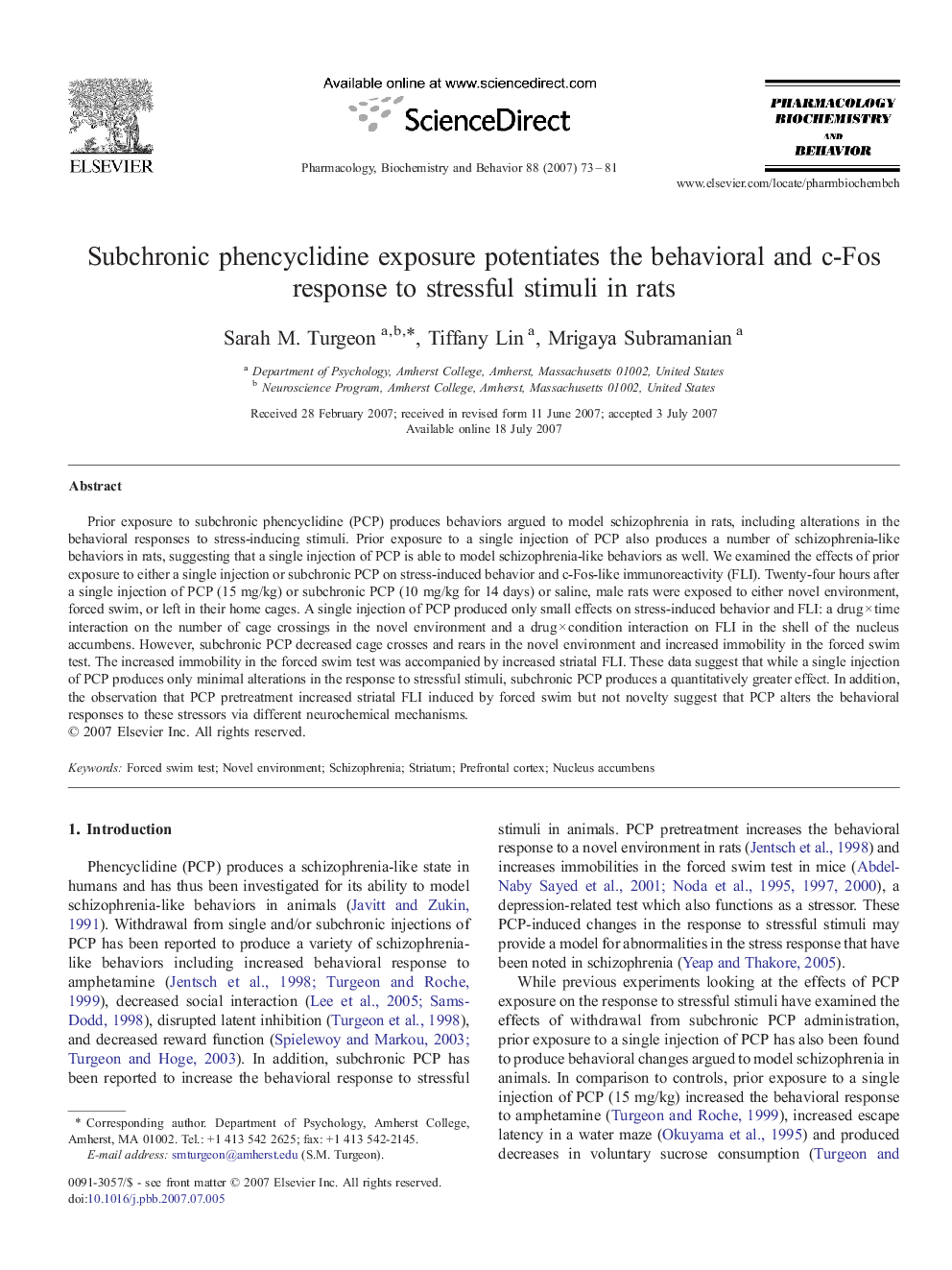| Article ID | Journal | Published Year | Pages | File Type |
|---|---|---|---|---|
| 2013768 | Pharmacology Biochemistry and Behavior | 2007 | 9 Pages |
Prior exposure to subchronic phencyclidine (PCP) produces behaviors argued to model schizophrenia in rats, including alterations in the behavioral responses to stress-inducing stimuli. Prior exposure to a single injection of PCP also produces a number of schizophrenia-like behaviors in rats, suggesting that a single injection of PCP is able to model schizophrenia-like behaviors as well. We examined the effects of prior exposure to either a single injection or subchronic PCP on stress-induced behavior and c-Fos-like immunoreactivity (FLI). Twenty-four hours after a single injection of PCP (15 mg/kg) or subchronic PCP (10 mg/kg for 14 days) or saline, male rats were exposed to either novel environment, forced swim, or left in their home cages. A single injection of PCP produced only small effects on stress-induced behavior and FLI: a drug × time interaction on the number of cage crossings in the novel environment and a drug × condition interaction on FLI in the shell of the nucleus accumbens. However, subchronic PCP decreased cage crosses and rears in the novel environment and increased immobility in the forced swim test. The increased immobility in the forced swim test was accompanied by increased striatal FLI. These data suggest that while a single injection of PCP produces only minimal alterations in the response to stressful stimuli, subchronic PCP produces a quantitatively greater effect. In addition, the observation that PCP pretreatment increased striatal FLI induced by forced swim but not novelty suggest that PCP alters the behavioral responses to these stressors via different neurochemical mechanisms.
